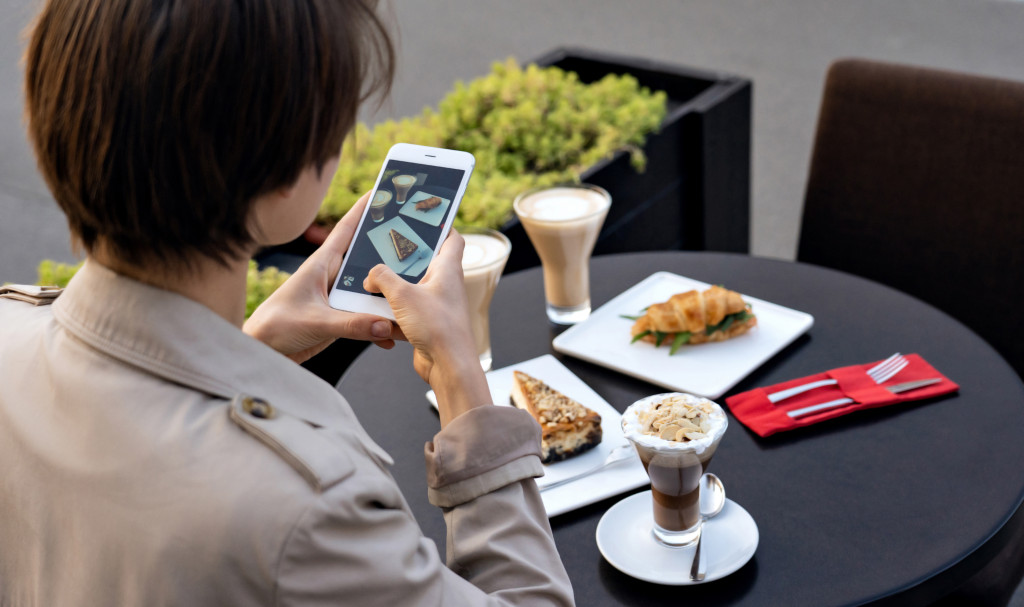Taking photos makes you feel great — everyone loves it! Whether it’s a photo of your latest outfit, a cute dog you saw on the street, or a dish you just cooked up, there’s nothing like capturing a moment and sharing it with friends and family. The problem is, sometimes, your photos don’t turn out quite how you wanted them to. They might be blurry, the lighting might be off, or it may feel crooked! But don’t worry, we’ve got you covered. Here are 10 tips to help you take better photos.
1. Use natural light.
When taking a photo indoors, try to position yourself near a window so that natural light can illuminate your subject. Natural light is always best for skin tones! In fact, taking photos during the golden hour, which is around sunrise and sunset, can make you look like you’re glowing. However, there are ways to make artificial light work for you, and it’s actually one of the most important tools that professional photographers use. However, as a person snapping photos with your phone, the easiest you can do is to go to your phone’s settings and adjust the light settings depending on the current indoor lighting.
2. Use a tripod.
If you’re taking a photo of yourself or someone else, using a tripod will help keep the camera steady and prevent your photos from turning out blurry. It also helps in taking long-exposure shots and exposing light trails. This also becomes a necessity if you want to take less noisy photos with low ISO settings in low-light conditions.
3. Set the timer.
If you don’t have anyone around to take your photo for you, no worries! Just set the timer on your camera and step into frame. This way you can still get that great selfie or group photo without having to ask a stranger for help. It’s also a great way to take photos of timed events. For example, it’s easier to just set the timer setting while you are counting down for a jumpshot rather than rely on the speed of your finger. Combine this with burst mode to take great action photos!
4. Play with angles.
Instead of taking a photo straight-on, try experimenting with different angles. Get low for an overhead shot or climb up high for an aerial perspective. Photos from a lower angle help any person in the shot appear to have longer legs. This angle also makes towers look taller. Angles also come into play when it comes to framing. Try to consider whether the objects and your main subject create angles; in general, more consistent angles in a photo create a sense of uniformity. You never know what kind of cool shot you might capture just by changing your vantage point!

5. Find some shadows.
Even though shadows darken a photo and make things hard to see, you can use them to your advantage. Used well, they can add depth and dimension to a photo. Position yourself or your subject in front of a light source and watch as the shadows do their magic. In fact, shadows are an important part of framing and contrast. Shadows can hide things in the background, forcing other objects to become the focal point of your photo. On the other hand, you can experiment with framing to make something in the shadows your focal point, which is great when you want to take photos that are scary or creepy.
6. Frame your subject.
Framing is one of the most important aspects of photography. It can help to focus the viewer’s attention on the main subject and also create a sense of depth and dimension in a photo. There are a few different ways to frame a subject: through the use of natural elements, such as trees or rocks, by using architectural elements in the background, or by using human-made objects as frames. You should also remember some key framing concepts, such as the rule of thirds, parallelism, and the golden ratio.
Look for trees, rocks, or any other objects that might make a good frame. Try to position yourself or your subject so that these natural elements surround them. This helps to create a sense of unity and cohesion in the photo. Another way to use natural framing is by taking advantage of shadows. Position your subject so that they are standing in front of a light source and watch as the shadows fall around them. This will add depth and dimension to your photo.
Another great way to frame your subject is by using architectural elements in the background. This can be anything from buildings, bridges, arches, to windows. If you can find a structure with interesting lines or shapes, use it as a frame for your photo. This type of framing creates a feeling of stability and symmetry in the photo. It can also help to emphasize the size or scale of your subject.
7. Edit your photos
…but not too much! A little bit of editing can go a long way in improving your photos (just ask any Instagrammer). But beware of going overboard—too much editing can make your photos look fake and unnatural. A few minor tweaks here and there should do the trick! Just remember, less is more.
Conclusion
We hope these tips help you take better photos! Just remember to have fun with it and experiment until you find what works best for you (and your camera). Look at the photos you love online, and try to emulate them. The more photos you take, the better photos you’ll end up making eventually. And if all else fails, there’s always the delete button!
